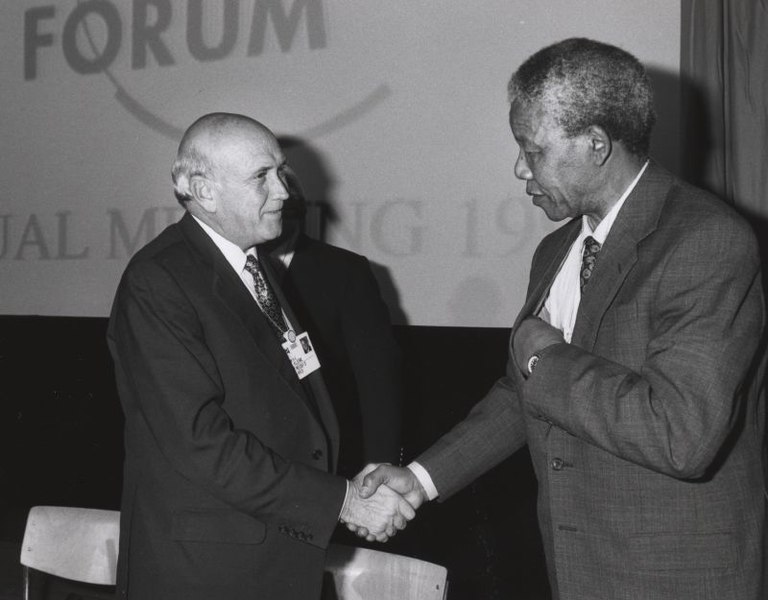Making of a Rainbow Nation
April 27, 1994 was a historic day for the people of South Africa. For the first time they could vote for a multi cultural government. On this day, 22 million South Africans turned out to decide the future of their country. And, Nelson Mandela won with an overwhelming majority.
The coalition government included Mandela’s African National Congress Party, the National Party of the former President F.W. de Klerk and Inkatha Freedom Party of the Zulu leader Mangosuthu Buthelezi.
In May, Mandela was inaugurated as President, becoming South Africa’s first black head of state. Mandela’s journey to the top was a long and arduous one.
Nelson MandelaWhen he was 26 years old, Mandela joined the African National Congress (ANC), which was the oldest black political organisation in the country. He soon became the leader of Johannesburg Youth Wing of the ANC. A decade or so later, he became deputy national president of the ANC. He believed in the tenets laid out by Mahatma Gandhi and he advocated non violent resistance to apartheid.
ApartheidIn Afrikaans apartheid means “separateness”. It means establishing a racially segregated society, discriminating against the black, coloured and Asian people. It was white supremacy encouraged and legalised by the white minority. Broadly divided into petty apartheid and grand apartheid, the former entailed public facilities and social events, the latter dictated by race, the latter dictated housing and employment according to race.
Sharpeville massacreOn March 21, 1960 there were demonstrations against laws that had been passed. At the end of the day, 5000 to 7000 protestors went to a police station in the South African township of Sharpeville in Transvaal (today a part of Gauteng). It was a peaceful protest. When the crowd advanced towards the fence around the station, the police opened fire. There were 289 causalities, of which 29 were children.
Ever since, March 21 is celebrated as a public holiday in honour of human rights and to commemorate the Sharpevill massacre. Mandela organised a paramilitary branch of the ANC to engage in guerilla warfare against the white minority government.
ConvictionIn 1961, Mandela was arrested for treason, but he was acquited. The next year, he was arrested for illegally leaving the country. This time he was convicted and sentenced to five years at Robben Island Prison. In 1964, he was again put on trial for sabotage. He and other ANC leaders were convicted and sentenced to life in prison.
The first 18 years of his sentence was spent in Robben Island Prison. Conditions in this prison were pathetic. He was forced to do hard labour in a quarry. He could write and receive a letter once in every six months and once a year he was allowed a visitor for 30 minutes. But, none of this broke Mandela’s spirit.
He continued to be the symbolic leader of the anti-apartheid movement. In prison, he led a civil disobedience movement and coerced the South African officials to improve conditions on Robben Island. He was later moved to another location.
F.W. de KlerkFrederick Willem de Klerk, was the last head of state from the era of white-minority rule.
F.W. de Klerk became president of South Africa in 1989. He lifted the ban on the ANC, suspended executions and in February 1990 ordered the release of Nelson Mandela.
The government led by de Klerk and the ANC led by Mandela began negotiations to end minority rule and apartheid and establish a multicultural government. In 1993, Mandela and de Klerk were jointly awarded the Nobel Peace Prize.
